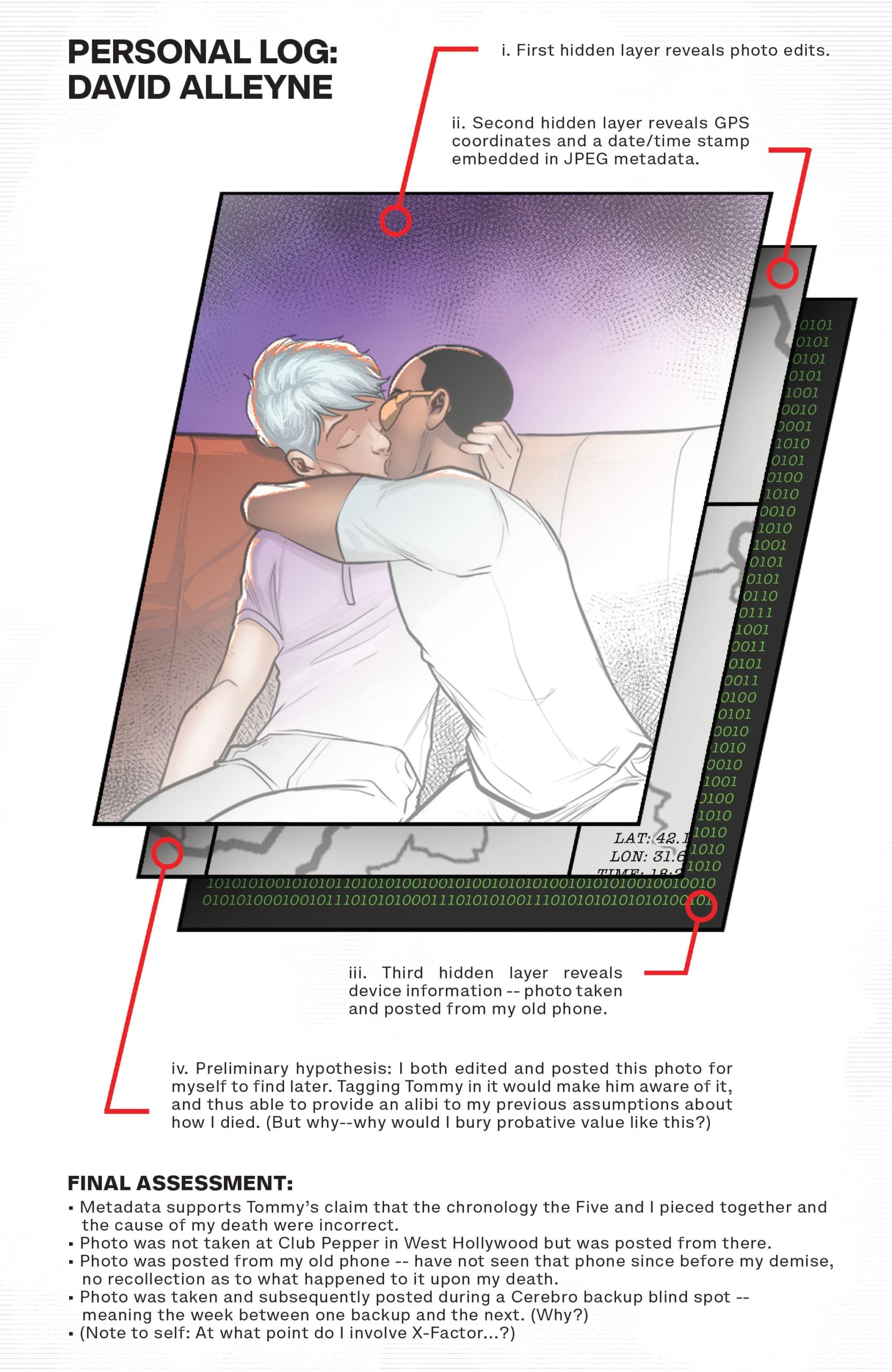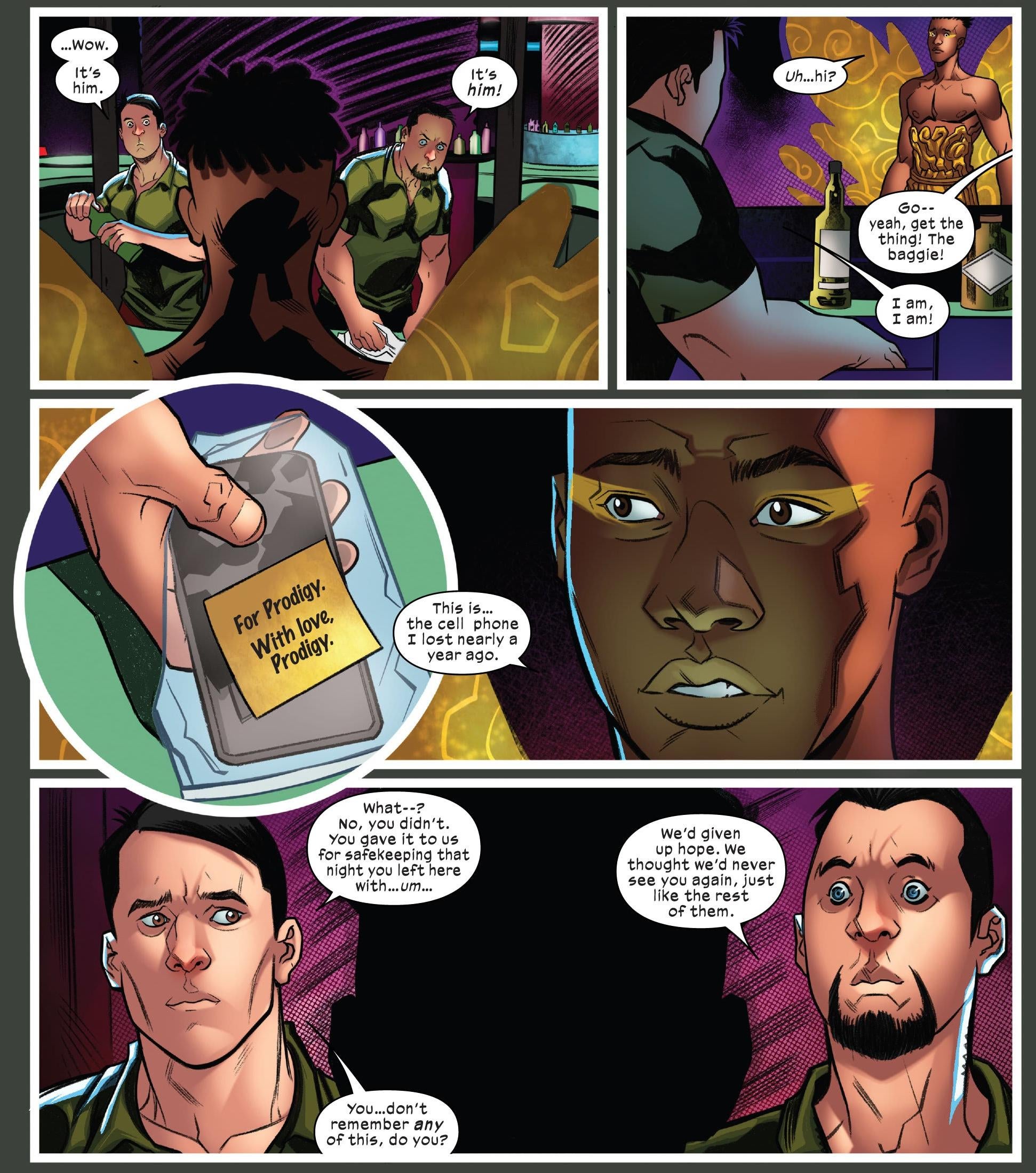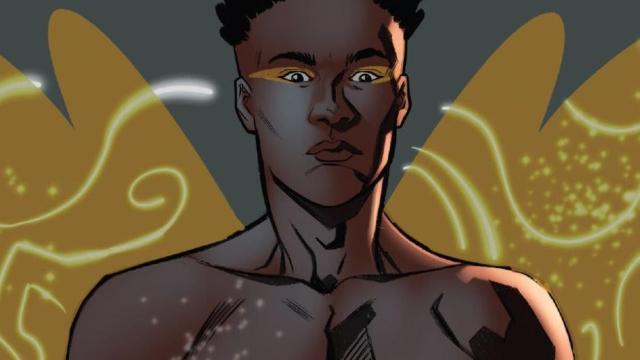Over the course of Marvel’s X-Factor — from writer Leah Williams and artists David Baldeón and Carlos Gómez — the eponymous team did the important work of making sure that mutants were actually dead before they were brought back to life with the use of Krakoa’s unique resurrection process.
When it wasn’t squarely focused on mutant crime investigations, X-Factor was also a choice example of how all comic book publishers and creative teams need to do to beef up their on-page queer representation is to just put queer characters into the books, and actually give them things to say and do. That approach, along with really working to flesh out each of the personalities that comprise X-Factor’s team, was what made the book dynamic as it explored the facets of different queer characters’ respective relationships from issue-to-issue.
With X-Factor’s final issue, #10, coinciding with the finale of the Hellfire Gala, it seemed as if the series was set to end with the squad getting glammed-up to revel with their fellow mutants in all they accomplished. But before X-Factor #10 was through, the story took a dark and misguided turn that really undercut some of the important progress that was being made in Marvel’s X-books.

In addition to various mutant death cases that were wrapped up fairly quickly, X-Factor also featured a larger overarching mystery about how young mutant David “Prodigy” Alleyne died at some point before being resurrected with the powers he’d previously lost during M-Day. No one, not even David himself, could properly recall the exact circumstances around David’s death.
But because his death occured around the general time that a number of mutants were killed in an attack on Xavier’s school, David’s working hypothesis for most of X-Factor was that it probably happened that attack. Being the nerd with an eye for details that he was, though, David continued to dig for information, hoping to learn the definitive truth about his demise.
Though David’s boyfriend Tommy “Speed” Shepherd is markedly less detail-oriented than David is, his feelings for David were already intense well before X-Factor began, which is why the pair were together on the night of the attack that David believed he died in. But in X-Factor #7, when Tommy shows David a photo of them at a club together that night, it rules out any possibility of David having been at the X-Mansion.

What was concerning about Tommy’s revelation beyond its face value was the information tucked into the photo’s metadata, all of which pointed to something odd having occurred to David in the past. Not only was the photo taken during one of the periodic “blindspots” when Cerebro underwent routine system maintenance, but it was also ultimately posted online at a location different than the one it was originally taken. Posting photos of a location when you aren’t physically at the location isn’t all that out of the ordinary. But the fact that all of this happened right when David died, especially during a moment when his consciousness wasn’t being backed up by Cerebro, all pointed to foul play being a major factor.
Between X-Factor having so many moving parts to manage within its own story, the multiple events that it got roped into, and the fact that the series was cut short by Marvel to end after just 10 issues, David’s murder sort of fell to the wayside in terms of how much attention it was given ahead of the book’s impromptu finale.
X-Factor #10 opens with the team preparing to make their way to the Hellfire Gala together — another line-wide event the series had to be integrated with while telling its own narrative — but after the team all arrive on Krakoa in a blinding flash of light, David tells everyone that he needs to make a quick trip back to the Boneyard to grab something he left behind. As X-Factor #10 follows David to West Hollywood, you get the immediate sense that this plot line likely wasn’t meant to play out so quick and haphazardly, given its subject matter.
When he walks into a gay bar in Los Angeles, the two men working there immediately recognise Prodigy and hand him a phone, even though Prodigy has no recollection of having ever met them. What Prodigy does recognise, however, is his own handwriting on a note stuck to the phone — and the implication that his past self left it there intending for his future self to find it.

David’s recovered phone leads him to the home of Buck Thatcher, a film producer who’s terrified to see David alive because Buck killed him.
In both Buck’s name and the X-Factor’s explanation of how he targeted young, queer Black men, you can see how the character is somewhat less-than-loosely based on a real person: Ed Buck, an LA-based, Democratic political fundraiser who was arrested in 2019 for the distribution of methamphetamine, and was tied to the deaths of Gemmel Moore and Timothy Dean, two Black men who both died in Buck’s apartment from overdoses.
Buck’s arrest came after years of calls from members of Moore’s family and other activists agitating for the Los Angeles District Attorney’s office to look deeper into Moore and Dean’s deaths, as well as the allegations of Buck specifically targeting Black men to dose with date rape drugs as well as other narcotics.
One of the prevailing ideas as to why the DA’s office initially declined to pursue charges against Buck boils down to the fact that he is a wealthy white man who sought out Black victims, whose deaths did not warrant further investigation by the police. What was — and continues to be — horrific about what happened to Gemmel Moore and Timothy Dean is how their stories and their loved ones’ calls for justice went largely ignored until the pile of dead Black bodies surrounding Ed Buck became so conspicuous, it became virtually impossible for the authorities to look the other way.
Ed Buck’s crimes and the explicitly anti-Black, racism-as-fetishism underpinning them are things that should be openly addressed and unpacked, because of how they embody the very real anti-Black racism that plagues our justice system as well as segments of the queer community. But turning these things into an afterthought wrap-up to a murder mystery within an X-Men comic — one that, intentionally or otherwise, was released on the last day of Pride Month — was tone-deaf in a way that that can’t be emphasised enough.
As an art form, comics can certainly lend themselves to the exploration of the ugliness that exists within people, at the same time that it’s trying to use those stories to spotlight the experiences of traditionally marginalised people. But in X-Factor #10’s case, the necessary steps to make this plot line work simply weren’t taken, and it’s unclear whether or not they ever would have been, regardless of whether the book was cancelled or had the time to explore David’s plotline over a longer period of time.
Though X-Factor #10 doesn’t go so far as to blame David for Buck’s actions, the fact that he went out that night specifically meaning to take Buck down after independently confirming what sort of predator he was adds a layer of superheroic frivolity that feels tonally off for a stories drawing from actual, real-life horrors. David’s confrontation with Buck becomes an opportunity for the rest of X-Factor to show up and speechify about how they plan to leave Buck to the human authorities, because mutants are now above killing mutants — and while that’s all very well and nice, it’s hard not to see this as a somewhat tactless attempt at turning real news into a tidy story about the kind of justice Black people are seldom afforded.
There’s still plenty to like about X-Factor, and it’s likely that much of the growth that its characters did is going to play directly into whatever adventures they find themselves on going forward in Marvel’s X-books. But in terms of sticking the landing when it came to sending off its take on one of Marvel’s most interesting queer mutants of colour, X-Factor ended up making the kinds of easily avoidable mistakes that drag otherwise solid books into the ground.

Comments